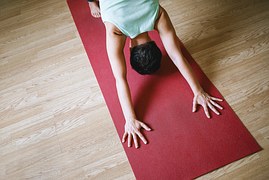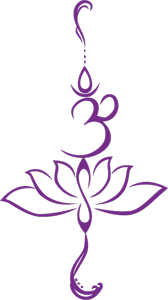Choosing a Style of Yoga to Practice (Part 3)
 The practice of yoga is not mastering the perfect asana (or pose), but of using each pose to better understand and transform yourself. Yoga is all at once mastery over the body, mind and spirit, and submission of the body, mind and spirit to a higher level of consciousness where all the answers to all the questions lie.
The practice of yoga is not mastering the perfect asana (or pose), but of using each pose to better understand and transform yourself. Yoga is all at once mastery over the body, mind and spirit, and submission of the body, mind and spirit to a higher level of consciousness where all the answers to all the questions lie.
Continuing your guide to yogic practices
9. Prenatal yoga involves postures and asanas developed for expectant mothers that have been adapted to all of pregnancy’s stages, including returning the body to its former shape after birth. Prenatal yoga is a great way for mothers to retain their core strength during pregnancy so they can easily regain their energy and strength after giving birth.
Prenatal yoga can also help expectant mothers prepare for labor and assist with the baby’s health. It focuses on mental centering, stretching, and focused breathing.
10. Restorative yoga uses props to assist practitioners with maintaining their balance while they are working to attain relaxation in all aspects of their lives: mental, physical and emotional. This style of yoga involves less work as practitioners spend up to 20 minutes in each of four or five easy poses. The props include blankets, bolster pillows, and eye pillows infused with relaxing lavender. Participants end up deeply relaxed and refreshed.
11. Sivananda yoga was developed by Sri Swami Sivananda and is a non-proprietary style of yoga that is Hatha Yoga based. It has five precepts that guide its presentation and assist with its goal of enhancing the body’s vitality and decreasing the opportunity for disease to take hold:
a. Proper exercise through practicing the asanas
b. Healthful breathing, or pranayama
c. Intense relaxation, often through savasana, the dead man’s pose
d. A healthful diet, preferable vegetarian
e. A positive attitude attained through meditation.
Sessions are usually 90 minutes in length and are initiated with savasana, which is the most relaxing pose for most people.
12. Viniyoga is a style of Hatha Yoga initiated by Indian yoga teacher, Tirumalai Krishnamacharya. US native Gary Kraftsow studied with the son of Tirumalai Krishnamacharya and was the founder of the American Viniyoga Institute.
In Viniyoga, practitioners are encouraged to adjust the asanas to meet their individual needs and capabilities. Rather than the typical yogic initial stretching for gaining in strength, Viniyoga emphasizes proprioceptive neuromuscular facilitation (PNF), or contracting and warming up a muscle prior to stretching it.
Power Yoga or Vinyasa is taught in a heated room, and is a very energetic form of yoga. Practitioners move from one pose into the next one fluidly, breathing with their movements. Rooted in Ashtanga, power yoga is a quick moving workout with a fast rhythm that is wonderful for strength training. It is energizing, and participants can definitely feel the burn after a number of challenging asanas.
13. Yin yoga is quite the opposite of Vinyoga, with its asanas that are held for five or more minutes. Founded in the late 1970’s by Taoist yogi, Paulie Zink, who was also an expert in martial arts, Yin yoga is often called Taoist yoga. The focus of Yin yoga is the lengthening of the body’s connective tissues in passive poses that allow the body’s muscles to relax while gravity stretches them. Asanas are lengthy and require patience.
14. Tantra yoga is a style of yoga that seeks to stimulate the kundalini, or primal, energy within the body via physical intimacy
Whatever style of yoga you choose, make sure you choose a style that will suit your needs and your body’s current conditioning. Try out one class before committing to a full group of classes.


